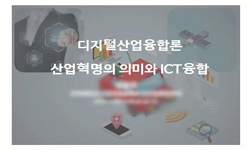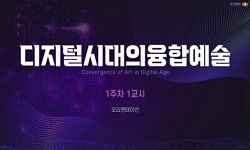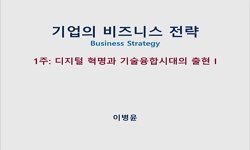In May 2005, nineteen members of the South Korean National Assembly introduced a bill to promulgated as the "Information Media Business" Act(Bill No. 2929), which is currently pending at the National Assembly. The Bill, if enacted, will be...
http://chineseinput.net/에서 pinyin(병음)방식으로 중국어를 변환할 수 있습니다.
변환된 중국어를 복사하여 사용하시면 됩니다.
- 中文 을 입력하시려면 zhongwen을 입력하시고 space를누르시면됩니다.
- 北京 을 입력하시려면 beijing을 입력하시고 space를 누르시면 됩니다.

컨버전스(Convergence) 시대에 방송의 규범영역 - "정보미디어사업법안"에 관한 비판적 고찰을 중심으로 = The normative Sphere of Broadcasting in Convergence Ear - A critical Study on "Information Media Business" Act(Bill No. 2929)
한글로보기https://www.riss.kr/link?id=A76476410
- 저자
- 발행기관
- 학술지명
- 권호사항
-
발행연도
2006
-
작성언어
-
- 주제어
-
KDC
360
-
등재정보
KCI등재
-
자료형태
학술저널
-
수록면
497-522(26쪽)
- 제공처
-
0
상세조회 -
0
다운로드
부가정보
다국어 초록 (Multilingual Abstract)
In May 2005, nineteen members of the South Korean National Assembly introduced a bill to promulgated as the "Information Media Business" Act(Bill No. 2929), which is currently pending at the National Assembly. The Bill, if enacted, will be the legislation in South Korea directly applicable to Convergence Service that has been much discussed and debated from diverse standpoints in various relevant fields. At the same time, it will establish a statutory basis for the regulation of the "Information Media Business activities" and who are involved therein.
Developing digital technology sharply, a view which distinguishes hard between communication area meaning individual communication and broadcasting area meaning mass communication that could be done clearly at analog era showed up. How to regulate this type of communication that appears at between broadcasting and communication area? In other words, there are issues which area this type of communication should be involved between broadcasting and communication area, or whether we have to create a third area that can adapt with economical relations.
The debates including the bill, however, make me have a critical mind because they are just limited at the old way of technology and the definition itself of broadcasting as the standard for determining what is a broadcasting within the statutory meaning. but any legislative effort for defining or characterizing the new type of digital communication, during the discussions over the pending bill at the National Assembly committees and session beyond, should be directed toward an analysis of constitutional Perspective. Because the legislative effort should be within the limit of constitutional value order. So, my thesis starts these two critical minds and to resolve these issues.
With the point that can distinguish between individual communication and mass communication and with respect to way of use or function of electric wave-media, I try to explain the constitutional value and each regulation system of individual communication and mass communication. In other words, I want to confirm constitutional concept of way of future communication with the developed technology based on the "theory of distinction of individual and mass communication" and suppose to standard of constitutional protection area for new way of communication. With this purpose in mind, I analyzed the constitutional meaning of the special protection of electronic wave resources mediated mass communication.
Therefore, the legislative efforts for digital based new type of communication in South Korea should reflect the concept of the actual and potential objects of electronic mass communication activities as opposed to the definition itself of broadcasting as the standard for determining which is a broadcasting within the traditional way of technology. In other words, the key to the legislative effort for defining the concept of new type of communication based on electronic facility will lie in how to have respective statutory conform to the nature of broadcasting as a mechanism for effective flow of information.
목차 (Table of Contents)
- Ⅰ. 문제제기
Ⅱ. 디지털 컨버전스와 새로운 커뮤니케이션 유형의 등장
Ⅲ. 전기통신설비의 매스커뮤니케이션적 이용과 그 보호가치
Ⅳ. 결론을 대신하여
참고문헌
〔Abstract〕
- Ⅰ. 문제제기
Ⅱ. 디지털 컨버전스와 새로운 커뮤니케이션 유형의 등장
Ⅲ. 전기통신설비의 매스커뮤니케이션적 이용과 그 보호가치
Ⅳ. 결론을 대신하여
참고문헌
〔Abstract〕
동일학술지(권/호) 다른 논문
-
- 한국헌법학회
- 이금옥(Lee Keum-Ok)
- 2006
- KCI등재
-
- 한국헌법학회
- 李富夏(Lee Boo-Ha)
- 2006
- KCI등재
-
헌법합치적 공영방송으로서의 KBS 개혁과제 - 문화국가와 사회국가·국민통제라는 관점에서
- 한국헌법학회
- 박선영(Park Sun-Young)
- 2006
- KCI등재
-
권리구제형 헌법소원심판의 논증 - 심판청구의 적법성 판단을 중심으로
- 한국헌법학회
- 김주환(Kim Joo-Hwan)
- 2006
- KCI등재




 스콜라
스콜라




